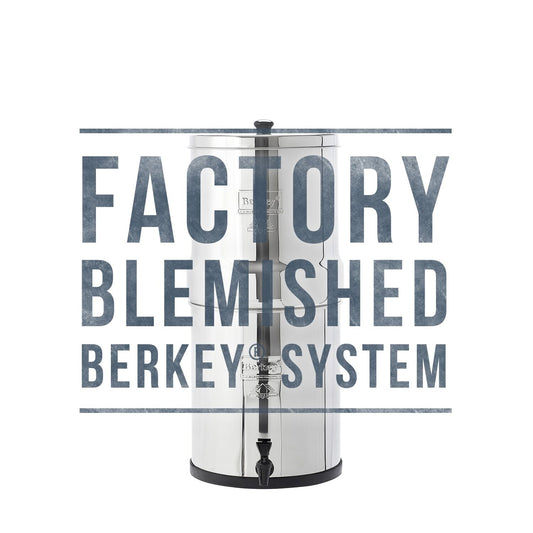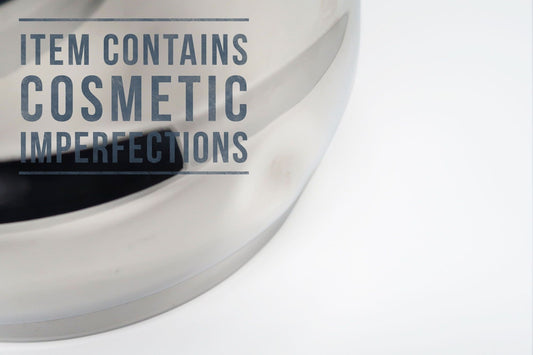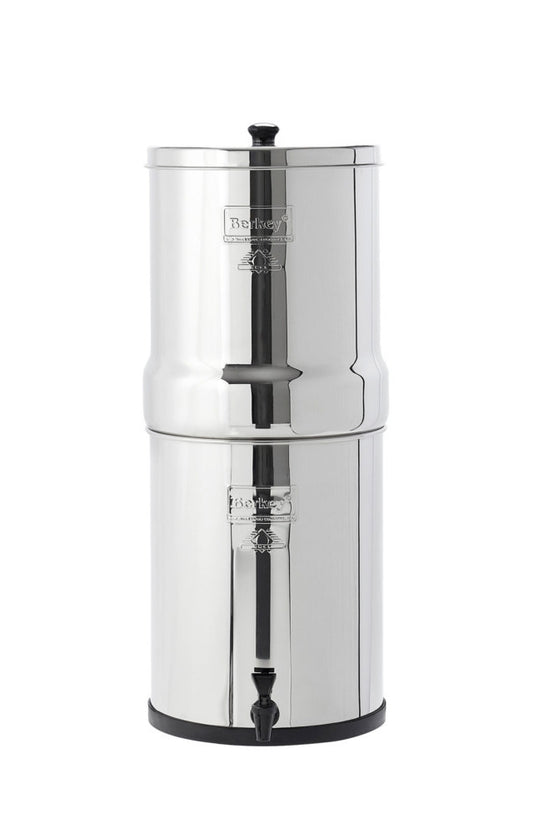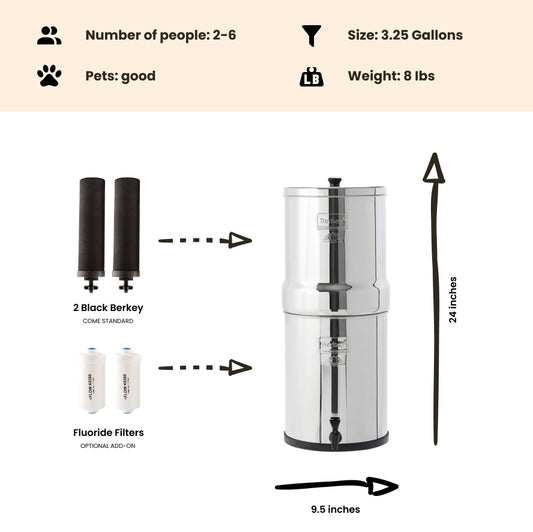Salty Waterways Create Cocktail of Harmful Chemical Contaminants
By Dan DeBaunShare
A recent study has found that over the last 50 years, US waterways have become increasingly salty, as well as more alkaline, due to runoff from fertilizers, road deicing, and other salty inputs released into waterways as a result of human activities — an effect the researchers refer to as "Freshwater Salinization Syndrome."
Now a new study conducted by the same research team, assesses the impact that Freshwater Salinization Syndrome has on local, regional and global water resources. The study's findings suggest that saltier alkaline freshwater has the potential to release a wide range of harmful chemicals, including nitrogen and toxic metals, from sediments in riverbeds and soils originating from drainage basins. The study, which was recently published in the scientific journal Philosophical Transactions of the Royal Society B., also suggests that many of the released chemicals flow through the watershed together, forming a cocktail of chemicals that can be far more detrimental to ecosystem health and drinking water quality than the presence of these individual pollutants alone.

A river affected by human waste runoff
The team's latest study, which included field observations in metropolitan areas around Washington, D.C. and Baltimore, underscores the need to improve the regulation and management of freshwater pollutants.
"The bottom line of our findings is that when humans add salt to waterways, that salt also releases a lot of dangerous collateral chemicals," said Sujay Kaushal, a professor of geology at the University of Maryland and lead author of the study. "It's clear that regulatory agencies need to find new ways to address these 'chemical cocktails' released by saltier water, rather than looking at individual freshwater pollutants one by one."
Salty freshwater that is more alkaline not only poses a threat to natural ecosystems, it is already understood that this also poses a serious problem to urban infrastructure and drinking water supplies. The water crisis in Flint, Michigan is one such example. When the town switched its water supply to the Flint River, the high salt content of the water from this source, combined with chemicals used in the treatment process, made the water highly corrosive, damaging water pipes. As the pipes corroded, lead leached from the pipes to contaminate the drinking water serving the city, exposing thousands of residents to this highly toxic contaminant.
For the latest study, the researchers looked at the impacts that chemical cocktails that formed in saltier water a little more closely. Rather than just focusing on rivers in the US, the researchers assessed published data from freshwater systems in Canada, China, Europe and Russia as well. Their findings indicate that rather than being limited to the US, Freshwater Salinization Syndrome could in fact be a problem that is more widespread. The results show a steady trend of both European and US rivers becoming saltier over the last 50 to 100 years.
In the colder regions of the US that experience snow and ice during winter, road salt is routinely applied to road surfaces in winter as a deicing measure. This salt makes its way to freshwater bodies with runoff and it the primary contributor to Freshwater Salinization Syndrome in the US. The researchers took a closer look at the chemical impact that road salt had on streams and rivers in and around Washington, DC and Baltimore. One of these observations included taking water samples from the Paint Branch stream at a site located near the University of Maryland campus, before a 2017 snowstorm, as well as during the snowstorm and after the snowstorm had passed. This allowed the researchers to monitor the effect of road salt flushed into waterways by melting snow.
Previous studies have shown that salty water can cause heavy metals such as cadmium, copper, zinc and manganese to be released from riverbed sediments into the water. The researchers observed a spike in copper, zinc and manganese levels immediately after the snowstorm at the Paint Branch observation site, while water samples taken from Rock Creek in Washington, D.C. had high levels of copper, zinc and cadmium following snowstorms in the area.
Experiments conducted at a site on the Gwynns Falls stream in the Baltimore area — where the researchers added salt to stream water to simulate the effect of an increased salt load following a snowstorm and measured copper levels before, during and after adding the salt — showed copper levels spiked when salt was added, suggesting there is a direct correlation between salt and copper levels in river water.
According to Kaushal, salt levels can remain high for several months after a storm, which in effect extends the duration that salt is able to extract metals from river substrates, contributing to the harmful cocktail of salts and toxic metals carried further downstream.
"Looking at water quality data over several months in the winter, salt remains high and rarely has a chance to return to baseline before the next storm comes through and more salt is put on the roads," said Kaushal. "This high salt load not only liberates metals and other contaminants, but there is also evidence that the initial salt pulse releases other salt ions from the streambed and soils, such as magnesium and potassium, which further contribute to keeping overall salt levels high."
In other parts of the country, such as the Midwest, agricultural fertilizers contribute heavily to Freshwater Salinization Syndrome. To assess the impact of fertilizers on river water quality, the researchers analyzed US Geological Survey data collected from 26 different monitoring sites on rivers located in agricultural areas. The USGS recorded data relating to pH, salinity and nitrate levels, as well as other contaminants at 15 minute intervals. The frequency of the measurements (15 minutes) provided the researchers with a real-time overview of how salt levels influenced nitrate levels, with an increase in salinity clearly and almost immediately resulting in an increase in nitrate levels.
"To me, this study highlights the need to view salt as an emerging contaminant in freshwater," said Shahan Haq, a geology graduate student at UMD and a co-author of the study. "Salt's ability to move heavy metals like copper from sediments into the water could have dangerous implications for our drinking water and could be toxic to wildlife. Our observations suggest that some rivers are already at risk, especially here in the eastern U.S. directly following road salt applications."
Journal Reference
Sujay Kaushal, Gene Likens, Michael Pace, Shahan Haq, Kelsey Wood, Joseph Galella, Carol Morel, Thomas Doody, Barret Wessel, Pirkko Kortelainen, Antti Räike, Valerie Skinner, Ryan Utz, and Norbert Jaworski. Novel 'Chemical Cocktails' in Inland Waters are a Consequence of the Freshwater Salinization Syndrome. Philosophical Transactions of the Royal Society B. (2018) Doi:10.1098/rstb.2018.0017
Further Reading
For more background on the concept of chemical cocktails, please see another recent publication co-authored by Kaushal, Wood and Haq, "Watershed 'Chemical Cocktails': Forming Novel Elemental Combinations in Anthropocene Fresh Waters," Sujay Kaushal et al., published October 22, 2018 in the journal Biogeochemistry: https://rdcu.be/9R1S
-
Regular price From $302.00 USDRegular priceUnit price / per
-
Regular price $234.00 USDRegular priceUnit price / per
-
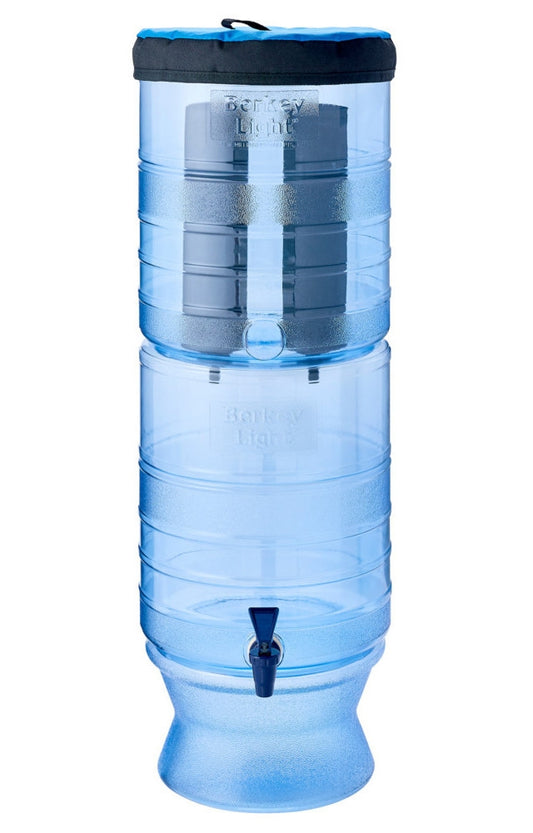
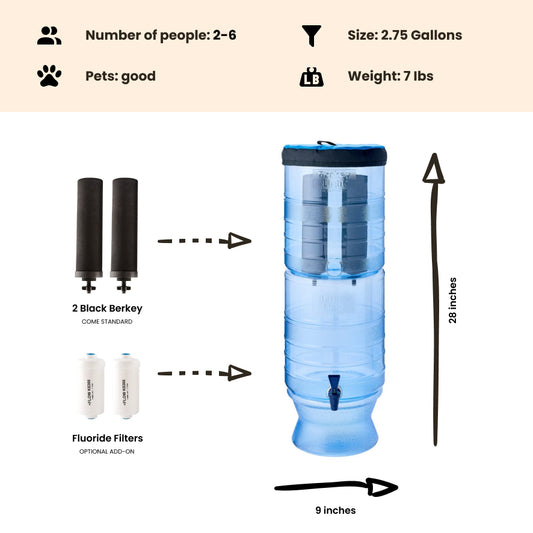 Sold outRegular price From $305.00 USDRegular priceUnit price / per
Sold outRegular price From $305.00 USDRegular priceUnit price / per -
Regular price $327.00 USDRegular priceUnit price / per
-
Regular price From $367.00 USDRegular priceUnit price / per
-
Regular price From $408.00 USDRegular priceUnit price / per
-
Regular price From $451.00 USDRegular priceUnit price / per

Dan DeBaun
Dan DeBaun is the owner and operator of Big Berkey Water Filters. Prior to Berkey, Dan was an asset manager for a major telecommunications company. He graduated from Rutgers with an undergraduate degree in industrial engineering, followed by an MBA in finance from Rutgers as well. Dan enjoys biohacking, exercising, meditation, beach life, and spending time with family and friends.
~ The Owner of Big Berkey Water Filters

